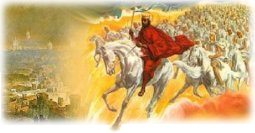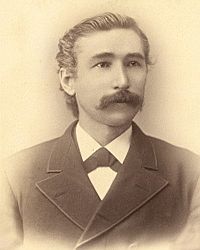 Alonzo T. Jones (1850-1923) was a minister in the Seventh-day Adventist church. From around 1888 onwards, he spoke and wrote very actively about “the everlasting gospel”, and the practical way to receive “Christ’s righteousness.”
Alonzo T. Jones (1850-1923) was a minister in the Seventh-day Adventist church. From around 1888 onwards, he spoke and wrote very actively about “the everlasting gospel”, and the practical way to receive “Christ’s righteousness.”
He was not alone in this work. Another man, Ellet J. Waggoner, also arose at exactly the same time and in many respects their messages were in harmony, although this was not planned by them. They were believed to have a special message from God to the church, as Ellen White testified:
Testimonies to Ministers, p. 91, 92 (1895):The Lord in His great mercy sent a most precious message to His people through Elders Waggoner and Jones. This message was to bring more prominently before the world the uplifted Saviour, the sacrifice for the sins of the whole world. It presented justification through faith in the Surety; it invited the people to receive the righteousness of Christ, which is made manifest in obedience to all the commandments of God.
Many had lost sight of Jesus. They needed to have their eyes directed to His divine person, His merits, and His changeless love for the human family. All power is given into His hands, that He may dispense rich gifts unto men, imparting the priceless gift of His own righteousness to the helpless human agent. This is the message that God commanded to be given to the world. It is the third angel’s message, which is to be proclaimed with a loud voice, and attended with the outpouring of His Spirit in a large measure.
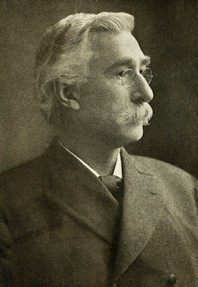 Jones was also a student of history, and wrote many volumes dealing with ancient history and the Bible. He also took a very active role in the defense and promotion of religious liberty in the USA.
Jones was also a student of history, and wrote many volumes dealing with ancient history and the Bible. He also took a very active role in the defense and promotion of religious liberty in the USA.
The message of Waggoner and Jones came to be known as “the 1888 message” because it really came to the forefront at the Minneapolis General Conference of 1888. Their message fell into obscurity after their death, but was recovered in the 1950’s. It was the turmoil associated with the rediscovery of that message, and the opposition it faced in the Seventh-day Adventist Church that led to the formation of the Sabbath Rest Advent Church. Since their message is the foundation of ours, it is appropriate to include their writings on this website.
Books
Gospel Lessons in the Old Testament
Bible Studies on the Christian Life
Evangelistic Temperance
Keeping the Commandments
Matthew 24
Protestantism: True and False
Restoration from Babylon
Revelation 13 & 14
Studies in Galatians
Studies in the Book of Daniel
The Consecrated Way to Christian Perfection
The History of Government
The Last Warning
The Light Shines in Darkness
The Millennium
The Place of the Bible in Education
The Reformation: 14th to 16th Century
Booklets
Bringing the Advent Message into the World
Christian Perfection
Christ’s Faithfulness in Sabbath-Keeping
Historical Necessity of the Third Angel’s Message
Individuality in Religion
Is Sunday the True Sabbath?
Jews and Gentiles
Opposing Principles
Original Sunday Legislation
Religious Liberty
Rome’s Challenge
Self-Exaltation or Self-Renunciation
The Immortality of the Soul
The Fragments Series
This series of books brings together the Periodical Articles of A. T. Jones, gathered and organized into topics, each major topic represented by one book. There will be 12 books in total (both for A. T. Jones, and E. J. Waggoner). These will be published here, as they are completed.
01 – Grace Greater Than Sin
02 – Healing and Temperance
03 – Life, Death, and Spiritualism
04 – Money and Work
06 – The Bible
07 – The Church
08 – The Holy Spirit
10 – The Name of God
The History of Government
 This short treatise looks at the topic of Political Science from a Christian perspective. A. T. Jones draws on his wealth of knowledge of history to show why it is that nations decayed and fell; why their governments became weak and could not hold the society together anymore.
This short treatise looks at the topic of Political Science from a Christian perspective. A. T. Jones draws on his wealth of knowledge of history to show why it is that nations decayed and fell; why their governments became weak and could not hold the society together anymore.
He deals with the Biblical principle that “righteousness exalts a nation” (Proverbs 14:34), and shows that self-government (also known as self-control, or temperance) lies at the foundation of the strength of a nation. If the citizens have self-government, then their national government will be strong.
Since it is only the gospel of Jesus Christ that can give man back his dignity and self-control, then true religion has much to do with the stability of nations.
Contents
- Eternal and Foundation Principles
- Two Kinds of Government
- The History of Government
- The Establishing of Imperialism
- The Perpetuation of Imperialism
- Character of Earthly Monarchy
- Rome: Self-Government
- Rome: the Decline of Self-Government
- Ecclesiastical Government of Rome
- Departure from True Principle I
- Departure from True Principle II
- The End of Earthly Human Government
Jones also deals with the Roman republic and the causes of its decay, and parallels this with the similar path pursued by the nations of today, especially America, the nation above all others that stood for the principle of self-government.
This is a very important book for the times that we live in. 77p
The Consecrated Way to Christian Perfection
 This book looks at Christ’s progressive roles as Prophet, Priest, and King, and how he consecrated the way for us to follow Him by joining our humanity to His divinity.
This book looks at Christ’s progressive roles as Prophet, Priest, and King, and how he consecrated the way for us to follow Him by joining our humanity to His divinity.
Contents
- Such a High Priest
- Christ as God
- Christ as Man
- He Took Part of the Same
- Made Under the Law
- Made of a Woman
- The Law of Heredity
- In All Things Like
- Further Qualification of Our High Priest
- The Sum
- That I May Dwell Among Them
- Perfection
- The Transgression and Abomination of Desolation
- The Time of Finishing the Mystery of God
- The Cleansing of the Sanctuary
- The Times of Refreshing
- Conclusion
In order for Christ to restore us to union with God, he had to be fully God in his divine nature, so as to reach the Father, and fully man in his human nature, so as to reach man.
And because human nature had become fallen and sinful, Christ had to take that nature with all it’s temptations and tendencies to sin.
But as a Prophet, he lived a perfect life in our flesh, and now through union with Him as our Priest, we can live the same perfect life today. All this is preparation for our joining Him on His throne as King, when He comes again.
This study also shows how Christ’s work as mediator in the Heavenly Sanctuary plays a vital part in the work of perfecting the saints on earth. 128p
The Separation of Religion and the State
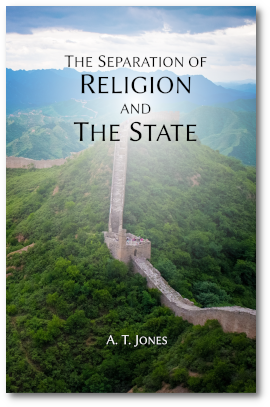 These articles were first printed in The Signs of the Times, 1899. In 1900, they were printed in book form, with the addition of some extra articles that were attached as extra chapters at the end, entitled: Christian Patriotism. I have published these originals because the shorter length makes the topic more concise and accessible.
These articles were first printed in The Signs of the Times, 1899. In 1900, they were printed in book form, with the addition of some extra articles that were attached as extra chapters at the end, entitled: Christian Patriotism. I have published these originals because the shorter length makes the topic more concise and accessible.
The subject, that the separation of Religion and the State has always been God’s purpose, even in the Old Testament, seems, on the surface, to be an incredible conjecture. We tend to associate the Old Testament with a theocracy that ruled by force and bloodshed. But A. T. Jones makes it clear in these few chapters, that this was never God’s purpose or ideal.
Contents
- The First Great Commandment
- Apostasy—Babylon and Assyria
- The Lesson in the “Father of the Faithful”
- The Lesson of Egypt
- Out of Egypt. The Singular Nation–Choosing a King
- Like All the Nations
- Result of Being “Like the Nations”
- Taught to Babylon
- Taught to Medo-Persia
- Christ the Example
- “The Powers that Be”
Asides from the obvious association of this book with the topic of Religious Liberty, the premise of this work is a big step towards a better view of God’s character. And if that weren’t enough, it also clarifies why “separation of church and state,” is a “lamb-like” power-principle, which helps us to identify the United States as the prophetic power referred to in Revelation 13:11-14. Therefore these articles deserve to be brought to light again. 73p
Why Genesis?
 This booklet was originally presented as a sermon on April 4, 1901. It shows that there was a reason for the writing out of the book of Genesis at the time of the deliverance of the children of Israel from Egypt. It was not done merely because they were starting to lose their knowledge of the past, but for a much greater reason.
This booklet was originally presented as a sermon on April 4, 1901. It shows that there was a reason for the writing out of the book of Genesis at the time of the deliverance of the children of Israel from Egypt. It was not done merely because they were starting to lose their knowledge of the past, but for a much greater reason.
That reason, Jones argues, was because their deliverance was to be accomplished by the creative power of God, and so they needed to become acquainted with that power, as revealed in the creation of the world.
Furthermore, the creative power of God is revealed again in the presentation of the final gospel message to the world (see Revelation 14:6,7). Therefore, we also need to become acquainted with the power of creation, and how that power works for our salvation and the final display of the gospel. 21p
Contents
- When was Genesis Written?
- Where Did God Want to Bring Them?
- Organized by Creation
- The People Choose Man’s Organization
- The Church Organized by God’s Creation
- The Creation to be Finished
- Genesis Written For Us
- God Creates Us Anew
- God’s Way of Organizing
- The Brooding Holy Spirit
- Successive Creations
- Finding the Spoken Word
- The Sabbath a Seal of Perfection
The Place of the Bible in Education
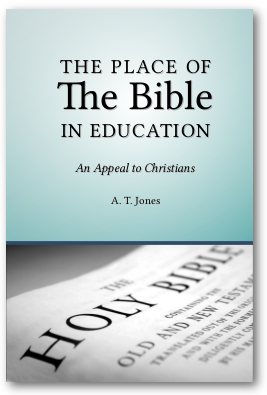 In the education of Jesus, and many other great men and women in sacred history, the Bible was not just a book of instruction in religion, but was the foundation and guiding book behind all the educational studies.
In the education of Jesus, and many other great men and women in sacred history, the Bible was not just a book of instruction in religion, but was the foundation and guiding book behind all the educational studies.
True education means the restoration of the noble and upright character that God originally created man with. Every branch of schooling can either lead us further from God, or take us closer to Him, in the contemplation of His thoughts, and the aspiration after His goodness.
This book reveals how the Bible is to be used to guide us in the study of Mental Science, Moral Science, Physical Science, History, Law, Logic, etc. It reveals what Christian schools ought to be like, but rarely are. 217p
Contents
- Christian Education
- The World’s Education
- The Essentials of Knowledge
- The Secret of the Great Apostasy
- The Greek or “Scientific Method” Today
- The Separation of Christianity and the State
- The Bible’s Right to Supreme Place
- The Education of Daniel
- What Was Taught in the Schools of the Prophets
- The Study of Wisdom
- The Study of Knowledge
- The Study of Science
- The Study of Mental Science
- The Study of Moral Science
- The Study of Physical Science
- The Study of Physical Science—Anatomy
- The Study of Physical Science—Healing
- The Study of Physical Science—Physical Culture
- The Study of Physical Science—Continued
- Literature, History, Law, Logic
- The Failures of Popular Education
The Two Republics
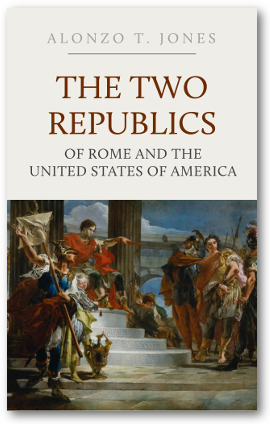 This extensive book traces the history of the republic of Rome, and how it eventually decayed into a false theocratical government used by the Catholic Church; and then compares this with the republic of the United States of America, and how it is prophesied to follow a similar course (in Revelation 13), and indeed already has come close in the past.
This extensive book traces the history of the republic of Rome, and how it eventually decayed into a false theocratical government used by the Catholic Church; and then compares this with the republic of the United States of America, and how it is prophesied to follow a similar course (in Revelation 13), and indeed already has come close in the past.
When A. T. Jones wrote this book, so-called “christian” laws were already being agitated before the government, and some local ones were passed into law. A. T. Jones was a champion of religious liberty, and opposed these laws before the Congress.
The history of Pagan and then Papal Rome stands as a warning to the United States, and to all nations, of what to expect if religion is married to the civil state. Persecution, strife, and national ruin are the sure results to follow. 895p
Contents
- The Last Days of the Republic
- The Two Triumvirates
- The Roman Monarchy
- The “Ten Persecutions”
- Christianity and the Roman Empire
- The Rise of Constantine
- Ancient Sun Worship
- The Falling Away – The Great Apostasy
- The Exaltation of the Bishopric
- The Religion of Constantine
- Constantine and the Bishops
- The Union of Church and State
- The Original Sunday Legislation
- Establishment of the Catholic Faith
- Arianism Becomes Orthodox
- The Catholic Faith Re-Established
- Mary is Made the Mother of God
- The Eutychian Controversy
- The Pope Made Author of the Faith
- The Church Usurps the Civil Authority
- The Ruin of the Roman Empire
- The Supremacy of the Papacy
- Protestantism – True and False
- The New Republic
- The Great Conspiracy
- The Bond of Union
- Will It Succeed?
- Conclusion
This PDF is a copy of the original book (originally scanned by Google). I’ve bookmarked it, cropped the pages a bit, rotated pictures, OCR’d the text (to make it searchable) and removed blank pages.
We have a few other resources available for study purposes. Andreas Dura prepared a 63-slide Presentation to go along with the book, which is available in PPTX (MS Office 2007 and newer) and ODP (LibreOffice). You can get that in the Media section here: The Two Republics – Slideshow.
Historical Necessity of the Third Angel’s Message
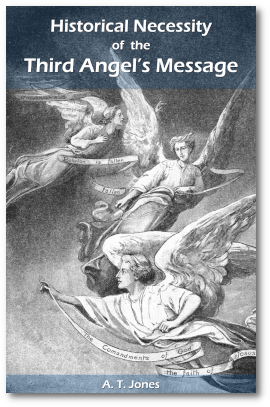 Gathered from a series of articles that first appeared in The Review and Herald in 1884, and then were later reprinted (with a few minor changes) in The Signs of the Times in 1888, this book covers some of the history of the Reformation up until the 1800’s with the aim of showing that the Reformation has been side-tracked by scholastic doctrinal disputes, and dividing over strained religious theories, and that the remedy for this is a message of moral renovation.
Gathered from a series of articles that first appeared in The Review and Herald in 1884, and then were later reprinted (with a few minor changes) in The Signs of the Times in 1888, this book covers some of the history of the Reformation up until the 1800’s with the aim of showing that the Reformation has been side-tracked by scholastic doctrinal disputes, and dividing over strained religious theories, and that the remedy for this is a message of moral renovation.
It was a moral renovation (through the forgiveness and cleansing of sin) that Luther sought and found, and which empowered the Reformation of the 16th century. But that was just a beginning.
The end of that Reformation, can only be a perfecting of that original work. And the perfection of moral renovation is credited to the work of the Third Angel’s Message:
Revelation 14
12 …here are they that keep the commandments of God, and the faith of Jesus.
And so the Third Angel’s Message finishes the work of the Reformation, not by introducing yet more strained ideas, but by bringing back moral renovation, and completing it in men and women. 51p
Contents
- The Reformation Begins
- Beginning of the Reformation
- Justification by Faith
- The Lord’s Supper
- Fanaticism
- A Difference of Opinion
- Attempts at Unity
- Melancthon Proposes Unity
- Calvin Proposes Unity
- The Interim: More Division
- The Rise of Scholasticism
- Controversy Over Good Works
- Synergistical Controversy
- Controversy Over the Human Mind
- More Disputes
- Reconciliation at Altenburg Fails
- “Form of Concord” Brings Discord
- Calvinism Brings in New Disputes
- More Factions
- All United Against the Anabaptists
- England: Conformists and Non-Conformists
- Controversy Over Bishops
- Controversy Over Sabbath
- Thomas Cartwright’s Extreme Views Divide
- The Rise of Independents
- Controversies
- Philosophical Controversies
- Liberty for Calvinists Troubles the Lutherans
- Attempts to Bring Harmony
- The Pietistical Controversy
- Calvinist Controversy Over the “Divine Decrees”
- Controversies and Revivals
- Arminian Controversy
- Controversy Between Episcopalians and Puritans
- Tumult Over the Quakers
- The Rise of Atheism
- Trinitarian Controversy
- The Wesleyan Revival
- Second Advent Revival
- A System of Morality Needed
- A Moral Reformation
- A Reformation Based on Morality
- The Third Angel’s Message
The Immortality of the Soul
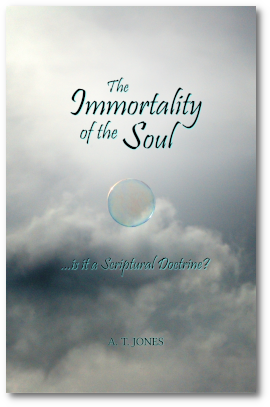 In this small book, the doctrine of the Immortality of the Soul is brought to the test. Jones shows clearly that major Christian truths such as the Judgment, the Resurrection, Christ’s Second Advent, and the purpose of God to cleanse the universe of sin, are all overthrown by a belief in natural immortality.
In this small book, the doctrine of the Immortality of the Soul is brought to the test. Jones shows clearly that major Christian truths such as the Judgment, the Resurrection, Christ’s Second Advent, and the purpose of God to cleanse the universe of sin, are all overthrown by a belief in natural immortality.
A belief in natural immortality also lays the ground for Spiritualism, the trust in communications from the spirit world, something which God warned against in the counsels given to ancient Israel.
The Bible supports a different view: that sin has brought death and mortality, but that eternal life is to be brought back to man through the life, death, and ministry of Jesus Christ. The resurrection is the great hope of Christians of all ages, the time when “death will be swallowed up by victory.” 43p
Contents
- The Resurrection
- The Second Coming of Christ
- The Judgment
- A Clean Universe
- The Mission of Christ
- Christ Our Life
- Which Will We Believe?
These two diagrams sum up the arguments of the first three chapters:
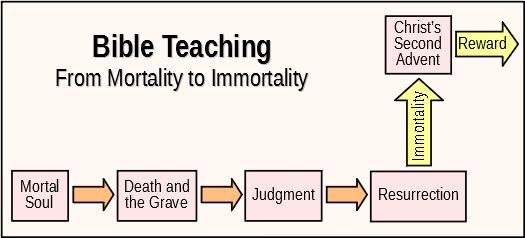
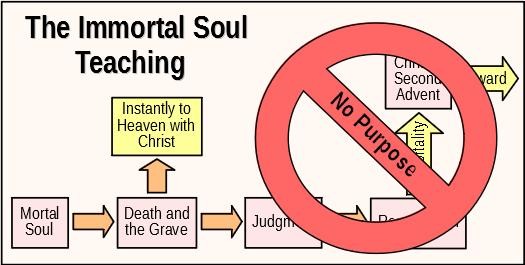
Updated Jan 2023: New ePDF formatting rules applied.
Self-Exaltation or Self-Renunciation
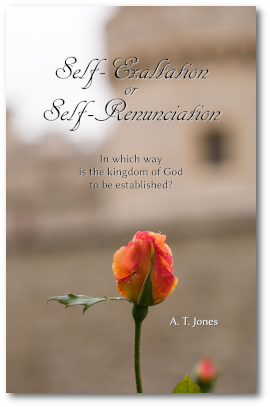 In which way is the kingdom of God to be established? God had a government and order, which was based upon His law, which in turn is a reflection of His character. That character is self-renunciation.
In which way is the kingdom of God to be established? God had a government and order, which was based upon His law, which in turn is a reflection of His character. That character is self-renunciation.
Satan wanted to restructure the government of God, supposedly to bring in more freedom, but actually to exalt himself. So his way of building the kingdom of God is through self-exaltation.
This booklet (originally called “The Spirit of the Papacy”) is a chapter taken from Jones’ larger historical work, Ecclesiastic Empire, originally published in 1901. I have retitled it because the majority of the content is not about the papacy, but about the development of Satan’s spirit (of self-exaltation), as opposed to God’s spirit (of self-renunciation).
It delves deeply into the principles of the rebellion as it developed in heaven, and as it spread to this earth, and how God dealt with it. The papacy is mentioned a few times, as a final manifestation and masterpiece of Satan’s way of kingdom-building. But the larger part of the historical reasons for why this is so, is contained in the other chapters of the original book (Ecclesiastical Empire).
There are a lot of precious insights into the reasons for the battle between good and evil, the development of Satan’s twisted reasoning, and why God has allowed these things to develop. The life and death of Christ are also upheld as the ultimate manifestation of God’s character of love. 66p
Updated Nov 2022: Corrections, and new formatting rules applied.
Contents
- The Spirit of Christianity
- The Origin of the Struggle
- Rebellion in Heaven
- Why Were They Not Destroyed?
- The Loss of Man and the World
- Another Mind in Man
- The Mystery of God
- Appendix: The Spirit of Christ
Note: a good companion volume to this one is Christ and Antichrist, by E. J. Waggoner.
Religious Liberty
 The six chapters that comprise this booklet were originally printed as weekly articles in The Southern Watchman, from August 15 to September 19, 1905.
The six chapters that comprise this booklet were originally printed as weekly articles in The Southern Watchman, from August 15 to September 19, 1905.
They are remarkable in that they present Religious Liberty (or freedom) as something which is inherent in the nature of God, and which He always gives to man, even though man may choose to use his freedom contrary to God’s will.
Contents
- Religious Liberty: The Gift of God
- God is the Author of Freedom
- Religious Liberty for Unbelievers
- Religious Liberty in the Gospel
- Religious Liberty in the Church
- Religious Liberty in the Nation
The principles Jones brings out are so far-reaching, that if followed to their logical conclusion they would lay the foundation for the new understanding of God’s character, that sin and not God is the destroyer, which principles Fred Wright presented 1974 in the book, Behold Your God.
For example, from Chapter 1:
…when God has made every creature perfectly free to choose to serve Him, and in that, free to choose not to serve Him—when that creature exercises his choice in the way not to serve God, even then God only loves him: for God is only love.
The only disposition that God has toward him is to love him, and by every possible means to win him yet to the choice to love Him and serve Him. That is God, and that is religious liberty.
And from Chapter 4:
Thus from the beginning to the end, from the creation of the first creature until the destruction of the last creature that shall ever exist, man is upon the foundation of absolute freedom; free to use his freedom in such way as he chooses.
And through it all God presents Himself in every possible way that even He can, to persuade the man to see and walk in the right way; to use his choice as he should.
When against it all, the man uses his choice in the wrong way, he gets at last simply what he has chosen, and he himself is the only one responsible for it. And that is freedom, that is religious liberty.
In short, freedom means that God does not interfere with man’s choice (other than to continually try to save him). Man receives what he chooses. If he chooses Christ, he receives eternal life. If he chooses sin, then sin pays him the wages of eternal death.
These principles of freedom that Jones brings out reveal that the light which was given to Waggoner and Jones, was the beginning of the revelation of God’s character, the light that should lighten the whole world, as prophesied in Revelation 18:1, and Isaiah 60. 26p
Updated Dec 2022: New ePDF formatting rules applied.
Restoration from Babylon
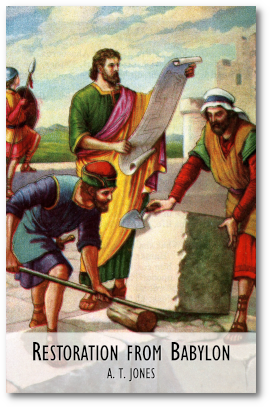 This book was originally a series of studies published in Signs of the Times periodical, in 1902. They were, as far as I know, never reprinted.
This book was originally a series of studies published in Signs of the Times periodical, in 1902. They were, as far as I know, never reprinted.
Jones starts this book with these words:
“There is hardly any portion of the Bible story that receives less attention than that relating to the period of the restoration of Israel to their own land, from the captivity to Babylon.”
“And yet there is hardly any portion of the Bible story that is more full of the very life and movement of God in human affairs; hardly any portion more full of valuable lessons. Indeed, there is no portion of the Bible story so full as is this of striking illustrations of how promptly and how triumphantly, God can interpose with kings and powers in behalf of His cause and His people in the earth.”
“For this reason, we want to look at that interesting and important part of the Bible story. The books of the Bible especially embraced in this are, Daniel, Ezra, Nehemiah, Esther, Haggai, Zechariah, and Malachi. The period of the world covered in the narrative is about from B.C. 536 to the crucifixion.”
The importance of studying the period of the restoration, when the Jews returned from Babylon to rebuild Jerusalem and the temple, is that it has a strong parallel to our time. They came out of Babylon, we are called out of spiritual Babylon; they rebuilt God’s true worship, we are called to be “repairers of the breach, restorers of paths to dwell in” (Isaiah 58:12); they rebuilt the temple and established the true worship, we are to point people to the ministry of the heavenly sanctuary and Christ’s work there, and to participate in that closing work. 135p
Updated Nov 2022: New formatting rules applied.
Contents
- Causes of the Captivity
- The Release from Captivity
- Troublous Times
- The Success of the Samaritans
- The Work of Haggai and Zechariah
- The Samaritans Compelled to Help
- Satan’s Master-Stroke
- The Hand upon the Throne of the Lord
- The Second Return
- The Third Return
- The Fear of God against Unbrotherliness
- The Wall Finished, the Temple Service Restored
- The Wall of Jerusalem Dedicated; the Rival Worship of Samaria Established
- Backsliding to Confirmed Apostasy
- From Religious to Political
- The Scepter Departs from Judah
- Appendix: The Samaritans
Jews and Gentiles
 Does God treat Jews and Gentiles differently? Is there one way of salvation for the Jews, and another way for the Gentiles? Will the Jewish nation (after the flesh) play a part in Last Day events?
Does God treat Jews and Gentiles differently? Is there one way of salvation for the Jews, and another way for the Gentiles? Will the Jewish nation (after the flesh) play a part in Last Day events?
In this series of studies, proofs are drawn from the Scriptures regarding the character of God (that there is no respect of persons with Him), and the gospel of Christ (that Christ was the best gift that heaven could give), to show how the Gentiles were grafted into the Jewish root stock, by faith. Children of faith are children of Abraham. There is only one tree: the family tree of Jesus Christ.
This booklet precedes the studies on “The Millennium” (see the separate publication below), because the theories that the physical Jews will play a role in prophecy is often tied in with incorrect views of the Millennium. So, both should be studied together! 49p
This is a good companion booklet to The Call of Abraham by E. J. Waggoner.
Contents
- The Meaning of the Names
- Jeremiah’s Prophecy
- Ezekiel’s Prophecy
- The Vineyard
- The Gospel Supersedes the Old Order
- All Justified by Faith
- No Difference
- What Advantage?
- Why Was Paul Sorrowing?
- Has God Cast Them Away?
- The Green Olive Tree
- The Gathering of Israel
The Millennium
 When Adventism first began (in America, around 1835) there was a popular expectation that the one thousand year “Millennium”, mentioned in the book of Revelation would be a time of peace and prosperity on Earth. Adventists differed strongly from that belief, preaching instead that the Second Coming of Christ would come first, and the earth would be destroyed.
When Adventism first began (in America, around 1835) there was a popular expectation that the one thousand year “Millennium”, mentioned in the book of Revelation would be a time of peace and prosperity on Earth. Adventists differed strongly from that belief, preaching instead that the Second Coming of Christ would come first, and the earth would be destroyed.
After the turmoil of the 1900’s, with it’s world wars, popular Christianity started to change their stance on the Millennium, believing now that the world would get worse and worse, but that Christ would come before the Millennium and take His people away. Most believe that the earth will still be inhabited, and habitable, during the thousand years.
Adventists, however, have not changed their views of prophecy. They still believe that the earth will be in a ruined state when Christ returns, and that the Millennium will be spent (by the righteous who are resurrected or translated at Christ’s coming) in heaven, not on the Earth.
This booklet lays down the scriptural foundation for the Adventist belief. It was recently updated (March 2018) to include a second set of studies on the same topic. The first set was published in 1887, and deals more with the false idea that the world would get better, or that it would be converted during the Millennium. The second set, published in 1900, has more details on what actually takes place during the Millennium, and afterward. 73p
Updated Dec 2022: New ePDF formatting rules applied.
Contents
- Is it Peace and Safety?
- In the Last Days
- The World Will Not Be Converted
- When Does the Millennium Begin?
- Who Shall Stand When He Appears?
- What Is the Millennium?
THE MILLENIUM (1887)
- The Millennium: When, Where, and Who
- The Desolation of the Earth
- A Land Not Inhabited
- Judgment in Heaven
- Judgment on Earth
- After the Millennium
THE MILLENIUM (1900)
What Happens When We Die?
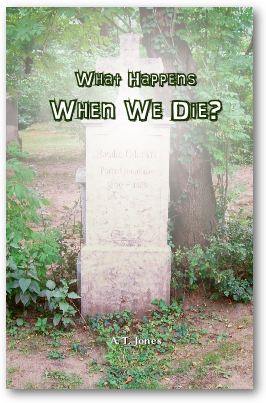 Death. The final frontier. But what happens after death? A. T. Jones turns to the Bible for the final answers. And surprisingly, they are not the answers that people commonly believe, even those who profess to believe the Bible.
Death. The final frontier. But what happens after death? A. T. Jones turns to the Bible for the final answers. And surprisingly, they are not the answers that people commonly believe, even those who profess to believe the Bible.
Originally titled, “Bible Questions and Answers Concerning Man”, this little volume is plain and clear, and rich with quotations from the whole Bible, both Old and New Testaments. It presents the Bible answers to the deep questions about life after death in a very concise and satisfying form.
I’ve reformatted it for ease of reading. 47p
Contents
- Introduction
- Is Man Mortal or Immortal?
- Where Do Men Go When They Die?
- Do the Dead Praise the Lord?
- If a Man Die, Shall He Live Again?
- How Are the Dead Raised Up?
- With What Body Do They Come?
- The End of the Unrighteous
- The Reward of the Righteous
Matthew 24
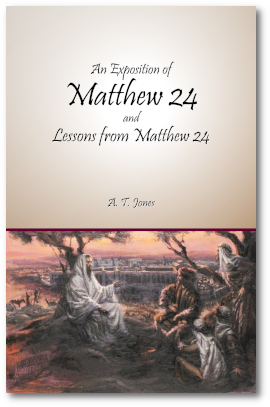 Matthew 24 is the main prophetic chapter of Jesus’ teachings to his apostles. It is like a miniature “Book of Revelation”.
Matthew 24 is the main prophetic chapter of Jesus’ teachings to his apostles. It is like a miniature “Book of Revelation”.
It blends the history leading up to the Second Advent of Christ along with the events surrounding the destruction of Jerusalem and the Temple. This is because the destruction of Jerusalem is a type of the end of the world: the same elements lead to the same results, only this time on a worldwide scale.
This publication is comprised of two separate commentaries on Matthew 24 by A. T. Jones:
- “An Exposition of Matthew 24 on the Second Coming of Christ” which was originally published as “The Bible Students’ Library No. 54” in 1890.
- “Lessons from Matthew 24” which appeared in “Signs of the Times” periodical, in the fall of 1900.
In this publication, both are combined into one, although they are separated by title pages. As per all of my other republications, these have been reformatted for ease of reading and study. 175p
An Exposition of Matthew 24
- Exposition of Matthew 24
- National Calamities
- False Prophets
- Iniquity Abounds
- The Preaching of the Gospel
- The Destruction of Jerusalem
- The Great Tribulation
- The Days of Tribulation Shortened
- Lo, Here and Lo, There
- The Advent Will be Literal
- Signs of the Lord’s Coming
- Fulfillment of the Signs
- All These Things
- Parable of the Fig-Tree
- This Generation Shall Not Pass
- Of That Day and Hour Knows No Man
- This Generation
- Noah’s Time and Ours
- Object of Matthew 24
- Our Duty to Watch
- The Faithful and Wise Servant
- The Evil Servant
- A Practical Doctrine
- The Faithful Rewarded at His Coming
Lessons from Matthew 24
- The End of the World
- Let No Man Deceive You
- As to the Time of His Coming
- The Signs of the Lord’s Coming
- Get Ready, Get Ready, Get Ready!
- The Destruction of Jerusalem: Its Meaning Today
Individuality in Religion
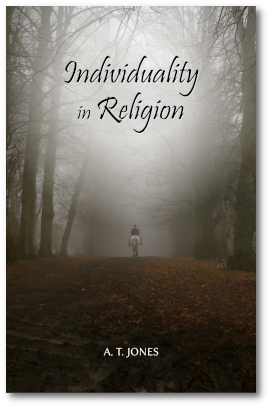 Religious Liberty, or “Soul Liberty” (as Roger Williams termed it), is the right of the soul to be free in its expression of faith toward God, without oppression or interference from others. The cornerstone of this idea is that God is the author of freedom, and that Jesus Christ came to restore this freedom in man.
Religious Liberty, or “Soul Liberty” (as Roger Williams termed it), is the right of the soul to be free in its expression of faith toward God, without oppression or interference from others. The cornerstone of this idea is that God is the author of freedom, and that Jesus Christ came to restore this freedom in man.
A. T. Jones was a strong defender of Religious Liberty and the rights of conscience, and even appeared before the United States senate in 1888 to oppose “Sunday Laws”, as being unconstitutional, and un-Christian.
In this booklet, Jones looks at four examples from the Bible, where the right of individual freedom to worship God according to conscience was held to, even in the face of persecution, and where the individual stand was supported even by Divine intervention. These four examples are:
- Daniel’s three friends before the image of Nebuchadnezzar
- Daniel in the Lion’s Den
- Jesus before the combined power of the Jews and Romans
- The Apostles before the Sanhedrin
He also looks at the principles of Romans 14 as a rule for relationships between individuals in the church, when there are differences in personal conviction and practice of the faith.
It would be incorrect to say this is only a study of history. Jones was looking forward to the time prophesied in the book of Revelation, when false worship would be compelled by law, with the threat of fines, imprisonment, and death. Therefore, this study is very much for the times ahead of us. 53p
Contents
- Introduction
- As Related to the Supremacy of Rulers
- As Related to the Supremacy of the Law
- As Related to Church-State Unions
- As Related to the Church Itself
- As Between Individuals
- God and Caesar
- Conclusion
Opposing Principles
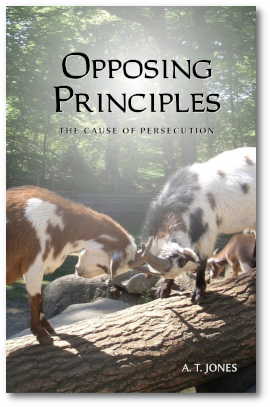 What caused the Roman Empire to persecute the early Christian church? A. T. Jones digs into the history books and the Bible to unveil the answer (this booklet is Chapter 25 from his larger book, “Great Empires of Prophecy”). Here are a few of the ideas discussed:
What caused the Roman Empire to persecute the early Christian church? A. T. Jones digs into the history books and the Bible to unveil the answer (this booklet is Chapter 25 from his larger book, “Great Empires of Prophecy”). Here are a few of the ideas discussed:
Ancient Rome was a highly religious empire. They drew the conclusion that since they were the most powerful nation in the world (in military might), therefore their gods were the greatest. They saw their gods as ruling through the state. Therefore the state (and later the emperors) were practically divine. This gave rise to the famous saying: Vox populi, vox dei (“the voice of the people is the voice of God”).
Christians, on the other hand, believed that there was only one true God, who was revealed in His Son Jesus Christ. They believed in being separate from the degrading rites of heathen religion. They believed that worship to God was to be rendered out of love, and therefore the conscience must be free to serve Him willingly. They believed in a separation between Caesar and God, and the duties owed to each.
So the two principles met in opposition to one another… 44p
Contents
- The Spread of Christianity
- The Christian Principle
- The Roman Principle
- Why the Conflict?
- The Battle
Christ’s Faithfulness in Sabbath-Keeping
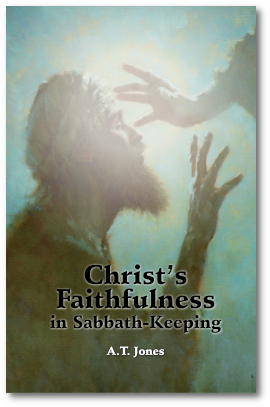 Jesus Christ was a Sabbath-Keeper, and that was the main reason why the Pharisees wanted to kill him. Many of Christ’s miracles (seven of them altogether) were performed on the Sabbath day.
Jesus Christ was a Sabbath-Keeper, and that was the main reason why the Pharisees wanted to kill him. Many of Christ’s miracles (seven of them altogether) were performed on the Sabbath day.
The Pharisees considered this to be “work,” and therefore not part of the Sabbath as they saw it. They tried to condemn Christ on these grounds. He defied the charge, and taught that this was, in fact, what the Sabbath was meant for: to do good and to bring life to needy souls. Thus the Sabbath pointed to God’s creative power, and therefore is part of the Gospel.
The rulers, however, saw Christ’s insubordination and popularity as a threat to the security of their nation. They thought that if this “Sabbath-breaking” continued, God’s curse would be on the nation, and then the Romans would come and take it all away, as a punishment from God.
So to save their nation, they killed their Saviour; and to preserve their Sabbath, they killed the true Sabbath-keeper. The importance of this history is that it was almost repeated again in the 1890’s (when this booklet was first published), and will be repeated again in the near future, in the contest for religious liberty: between the commandments of God, and the traditions of men. 46p
Contents
- Christ’s Faithfulness in Sabbath-Keeping
- Healing the Palsied Man
- Healing the Man at the Pool of Bethesda
- Plucking Ears of Corn
- Healing the Man with the Withered Hand
- Healing the Blind Man
- Healing the Woman with the Infirmity
- Healing the Man with Dropsy
- The Raising of Lazarus from the Dead
- Render to Caesar
- A Modern Day Parallel
Rome’s Challenge: Why Do Protestants Keep Sunday?
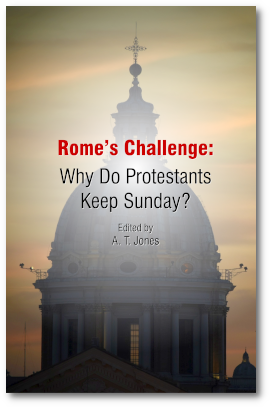 This booklet originally appeared in 1893, around the time that Protestants were agitating for Sunday-closing laws in the United States.
This booklet originally appeared in 1893, around the time that Protestants were agitating for Sunday-closing laws in the United States.
A Catholic journal, “Catholic Mirror”, published a series of articles taking Protestants to task for claiming to teach “the Bible only” yet adopting Sunday as the Sabbath, a day which has no authority in the Bible, but which the Catholic Church claims as a sign of her authority.
This is a reprint of those articles, along with a few footnotes and some Appendix comments added by A. T. Jones.
The Catholic who wrote this proves very conclusively from “the Bible only” that Sunday has no authority or recognition as a holy day in either the Old or New Testaments. He has some pretty embarrassing things to say about the hypocrisy of Protestants who attempt to defend Sunday on the basis of sola scriptura. 42p
Contents
- Introduction
- The Proposition
- The Bible Only
- In the New Testament
- The Lord’s Day
- Conclusion
- Appendix I
- Appendix II
The Christian Sabbath
Editorials
Original Sunday Legislation
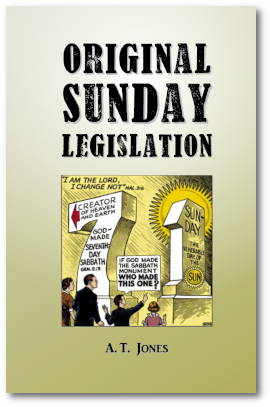 When the church begins to lose the power of the gospel, she inevitably turns to the power of force, or the state. Constantine was the first to legislate a Sunday closing law, in 321 AD. This was a religious law, enacted on behalf of the Christian bishops of the Roman church, in order to increase their popularity and power.
When the church begins to lose the power of the gospel, she inevitably turns to the power of force, or the state. Constantine was the first to legislate a Sunday closing law, in 321 AD. This was a religious law, enacted on behalf of the Christian bishops of the Roman church, in order to increase their popularity and power.
Behind this historic joining of church and state, which laid the foundation for the papacy that followed, was a certain theocratic theory, that the state could be used to “build the kingdom of Christ” on earth.
Some years after the initial Sunday Law, church father Augustine proposed the idea that people could be “brought to serve God” by “fear of punishment or by pain” (“the rod of temporal suffering”). This idea, of course, laid the groundwork for the Inquisition.
But God is not pleased with forced worship. Any attempt to establish true worship by the enactment of laws, can only lead to enforced hypocrisy, and eventual separation from God, and destruction.
This booklet covers the history of that first Sunday law, which history is important as a foreshadowing of the future church-state union that is to cover the world before the close of this world’s history.
This booklet from A. T. Jones is Chapter 32 from his larger book, “Great Empires of Prophecy.” 28p
Contents
- True and False Theocracies
- The New, and False, Theocracy
- The New Kingdom of God
- Law Secured for Rest on Sunday
- Constantine’s Famous Sunday Law
- The Sunday Law Only Religious
- By Authority of Pontifex Maximus
- Sunday in the Council of Nice
- Sunday Work Made Sacrilege
- The Church Obtains the Monopoly
- Origin of the Inquisition
The Last Warning
 This book covers the Three Angels Messages of Revelation 14:6-12, which comprise the “last warning” message to be given to the world before Christ returns. It ties in the prophecies very nicely with the everlasting gospel. There is also an excellent discussion on the true spiritual meaning in the Sabbath.
This book covers the Three Angels Messages of Revelation 14:6-12, which comprise the “last warning” message to be given to the world before Christ returns. It ties in the prophecies very nicely with the everlasting gospel. There is also an excellent discussion on the true spiritual meaning in the Sabbath.
The chapters in this book were originally published as part of a book called “Great Nations of To-day” in 1901. The first part had some history about the decay of the Roman Empire. Then the Seven Trumpets were covered, and then in the middle of the book was a chapter on the “Eastern Question”. This was a wrong idea held by Adventists at that time, that Turkey would be the central figure in the battle between all the nations. It was an error in using “geographical” interpretation instead of “spiritual”.
For those wanting the true “spiritual” interpretation of prophecies concerning Armageddon, the king of the north, and so forth, I could recommend the following: Armageddon, Last Day Events, The Seven Angels, and The Vision by the Hiddekel.
Anyway, the last half of the book was excellent and I didn’t want it to fall into oblivion just because of one chapter that was partly in error. So I gathered up the last 12 chapters, and have published them here.
The earlier part of the original book, on the Seven Trumpets, did not contain anything new that was not in other Adventist books on the Trumpets, so I have not reproduced them here. 134p
Contents
- The Third Angel’s Message
- The Time of the Message
- What is Babylon?
- The Daughters of Babylon
- The Beast and His Image
- The Work of the Beast
- The Image of the Beast
- The Exaltation of Lawlessness
- The Necessity for the Message
- The Commandments of God
- The Faith of Jesus
- The Commandments of God and Faith of Jesus
- The Hour of Judgment
The Light Shines in Darkness
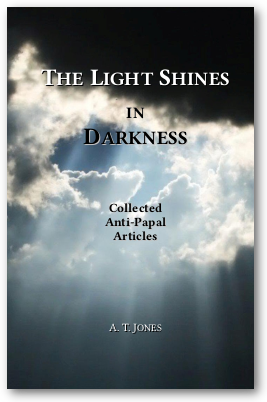 Here is an important new collection of articles written by A. T. Jones, comparing the everlasting gospel truth with the errors of Papal doctrine. The Papacy is the great masterpiece of false religion, and here many of it’s deceptions are laid bare by the sword of the Spirit.
Here is an important new collection of articles written by A. T. Jones, comparing the everlasting gospel truth with the errors of Papal doctrine. The Papacy is the great masterpiece of false religion, and here many of it’s deceptions are laid bare by the sword of the Spirit.
Most of these articles appeared in periodicals, and were therefore never published in book form. I’ve gathered them together, organized them by topics, and formatted them so that their truths can once more shine clearly upon the pathway of others.
The American Sentinel, a religious liberty magazine that Jones edited for many years, was the source for many of the articles. About this magazine, Ellen White wrote (5T 718):
The Sentinel has been in God’s order, one of the voices sounding the alarm, that the people might hear and realize their danger and do the work required at the present time…The Sentinel is like a trumpet giving a certain sound; and all our people should read it carefully.
The Papacy is not a clumsy counterfeit, but a masterpiece of deception. Her “deadly wound” is being healed because men have lost sight of the real gospel, and have been filled with the spirit of the world: self-exaltation. The “stealthy but rapid progress of the papal power” (The Great Controversy, p.606) is still on the march. Jones blew the “warning trumpet” in his day…are we ready to do the same? 826p
Updated Nov 2022: Corrections and new formatting rules applied.
Updated Dec 2022: Article on Justification from 1893 GC Bulletin corrected (italics and congregation feedback added).
Contents
- The Beginning
- Early Developments
- Adopting the Day of the Sun
- The Creation of the Papal Religion
- The Establishment of the New Religion
- Exaltation of the Bishopric
- The Man of Sin Revealed
- Constantine and the Bishops
- The Church in the Fourth Century
- Christianity Legally Defined in Rome
THE FALLING AWAY
- The Catholic Way of Salvation
- The Free Salvation of God
- The Faith of the Creed
- The Catholic System of Faith
CATHOLICISM VS. CHRISTIANITY
- Indulgences
- The Gospel vs. the Mystery of Iniquity
- The Catholic Idea of Justification by Faith
- Justification: the Christian or the Catholic Way
- Justification by Faith vs. Justification by Works
- Justification by Faith Alone
- How to Oppose the Papacy
- The Conception of Mary
- The Immaculate Conception
- Christianity Against Ritualism
- Sin from a Roman Catholic Standpoint
- The Second Commandment: Rome vs. the Bible
- Seeing the Invisible
- The Sabbath and the Sufficiency of Scripture
- Rome and the Bible
- God’s Word vs. Man’s Word
- The Power of the Reformation
- The Bible, Protestantism, and the Papacy
- The Authority of the Word
- Sun Worship
- Christmas
- Easter
- The Purpose of Lent
- The Right of Private Judgment
- The Establishment of Image Worship
THE BIBLE AND THE GOSPEL
- Spiritualism in Baltimore
- Origin of the Doctrine of Natural Immortality
IMMORTALITY OF THE SOUL
- The Regency of God
- The Headship of the Church
- The Infallibility of the Pope
- Christ or Peter: Which?
- True and False Theocracy
- Rome Pagan and Papal
- A Religious Delusion
- The Catholic Church
CHURCH ORDER AND ORGANIZATION
- In You or in the Eucharist?
- Living Faith
- The Real Presence
THE REAL PRESENCE
- The Story of St Anne
- Saint Worship
- St Anne vs the Saviour
- Roman Catholic Saints and Miracles
- Roman Catholicism and Spiritualism
- Catholic Shrines and Miracles
- Superstition and the Papacy
WORSHIP OF SAINTS
- The Huguenots and St. Bartholomew’s Day
- Did the Catholic Church Ever Persecute?
- The Catholic Church and Religious Liberty
- The “Modern Inquisition”
- Heresy is Treason
- Revising History
PERSECUTION
- Salvation by Grace or by Force
- The Principles of the USA and Rome
- The Papacy and Christian Civilization
- Opposing the Papacy
- Rome’s Scheme for the United States
- Facilities for Rome in the USA
- Power Over the Papacy
- Rome: the Bible and the Constitution
- The Catholic Church and Religious Liberty
- Rome Never Gave Freedom
- Rome Condemns Free Inquiry
- Preposterous Claims of the Papacy
- A Return to the Principles of Protestantism
- The American Policy of the Papacy
- Babylon the Great, the Mother of Harlots
- Calling Things by Their Names
- Our Stand Towards Roman Catholics
- The Pope’s Letter to the English People
- Papal Policy
- Pope Leo’s Denial
CATHOLICISM IN AMERICA
- Prophetic Basis
- Restoration Among the Nations
- Restoration in the USA
- The Return of Persecution
- Forming the Image
- The Contest and Results
- The Timing: Shown from the Trumpets
- Finishing of the Mystery
- The Timing: Shown in the Seventh Trumpet
- The Extent and Purpose of the Message
- The Faith of Jesus
- The Commandments and Faith
- Keeping All the Commandments
THE RESTORATION OF THE PAPACY AND GOD’S ANSWER
There is a companion volume to this one, on the same topic, by E. J. Waggoner, The Great Falling Away.
We Would See Jesus
 This is a lovely devotional, meditational discourse on the Second Advent of Jesus Christ, the longing of His people to see Him, the richness of the future immortal life, and the prophecies outlining these remarkable events. 17p
This is a lovely devotional, meditational discourse on the Second Advent of Jesus Christ, the longing of His people to see Him, the richness of the future immortal life, and the prophecies outlining these remarkable events. 17p
Contents
- The Name of Jesus
- For We Love Him
- Not as He Was
- But as He Is
- Coming in the Clouds
- We Shall Be Like Him
- The Scriptural Foundation
- He Will Come for His Own
- A Glorious Climax of the Plan of Salvation
- Gathering of the Elect
- The Goodly Land
- The Place of Gathering
- We Must Be There
The Reformation: 14th to 16th Century
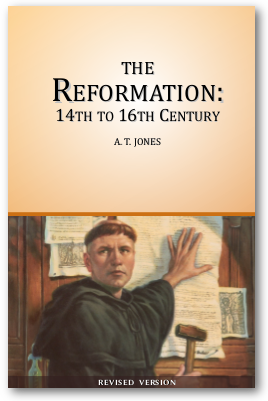 Adventists see their movement as a continuation of the Reformation. The aim of the Reformation was to recover the truth and experience of the early Apostolic church, present that gospel to the whole world, and thus prepare the way for Christ’s return. The idea of the church’s role in preparing the way for Christ is well expressed in the following verse:
Adventists see their movement as a continuation of the Reformation. The aim of the Reformation was to recover the truth and experience of the early Apostolic church, present that gospel to the whole world, and thus prepare the way for Christ’s return. The idea of the church’s role in preparing the way for Christ is well expressed in the following verse:
Revelation 19
7 Let us be glad and rejoice, and give honor to him: for the marriage of the Lamb is come, and his wife has made herself ready.
8 And to her was granted that she should be arrayed in fine linen, clean and white: for the fine linen is the righteousness of saints.
This important work by A. T. Jones takes a deeper look at the very core principles of the Reformation, which were (and still are) in danger of being lost by the generations following who did not have to struggle to obtain their freedom.
As well, Adventists, who claim to be a continuation of the Reformation, need to examine themselves to see if they are indeed building on the same foundation today.
This was the last book Jones wrote, published in 1913, when he was 63 years old. He passed away 10 years later. In many ways this book is a culmination of much of his religious thought, his “swan song” as it were, the harvest of years of studying, preaching, and writing on history, prophecy, and Christian faith.
However, Jones was also separated from the Seventh-day Adventist denomination about 5 years prior to the publication of this book, and there were some bitter circumstances surrounding this, which affected his views after that time. I have explained this in more detail in the “Foreword” of this edition.
Consequently, this is a “Revised Version” of the book. There are two reasons for this: First, to remove the material concerning the Federation of Churches, a local movement in Jones’ day that does not exist today. Second, to remove sections of two chapters which over-emphasized “individuality” and “non-denominational” ideas. Again, the details of these omissions are explained in the “Foreword”. The principles are important, and I wanted them to stand free and unencumbered by the personal or national issues of that particular time. 319p
Contents
- What is Protestant?
- What Protestant Means in America
- What Caused the Reformation?
- The Reformation and the Roman Church
- The Reformation Church
- The Reformation Head of the Church
- The Reformation Building of the Church
- The Reformation Guidance of the Church
- The Reformation Christian Unity
- The Reformation and the Bible
- The Reformation and the Gospel
- The Reformation Christian Brotherliness
- The Reformation Religious Liberty
- The Reformation and the Papacy
- The Reformation Fully Accomplished
- The Reformation and Sunday
- The Reformation and the Sabbath
- That Woman Jezebel
- The Two Women of Revelation
Revelation 13 & 14
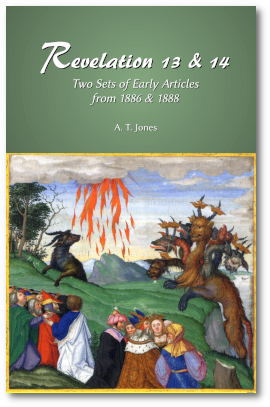 This book contains two series of articles:
This book contains two series of articles:
- A series of articles from 1886 covering The Image of the Beast
- A series of Sabbath School questions from 1888 covering The Third Angel’s Message.
The first series covers some of the attempts to unite Church and State that were taking place in America during those years.
It also contains the unique 1888 gospel emphasis when discussing Revelation 14:12 – “the commandments of God and the faith of Jesus,” which is the Divine solution to the Image of the Beast.
The second series consists of Sabbath School Lesson questions (and answers): one for every weekly lesson in the church’s Sabbath School. They are also on a similar topic.199p
Contents
- Restoration of the Papacy I
- Restoration of the Papacy II
- Restoration of the Papacy III
- Restoration of the Papacy IV
- Restoration of the Papacy V
- The Third Angel’s Message
- The Time of the Third Angel’s Message I
- The Time of the Third Angel’s Message II
- Time of the Third Angel’s Message III
- The Extent and Purpose of the Third Angel’s Message
- The Faith of Jesus
- The Commandments of God and the Faith of Jesus
- The Standard of the Lord
THE IMAGE OF THE BEAST (1886)
- The Time of the Message
- The Time of the Message
- The Time of the Message
- The Time of the Message
- The Development of the Beast
- The Development of the Beast
- The Making of the Image
- The Making of the Image
- The Purpose of the Sabbath
- The Mark of the Beast
- The Seven Last Plagues
- The Wrath of the Dragon
- The Working of Satan
THE THIRD ANGEL’S MESSAGE (1888)
Studies in Galatians
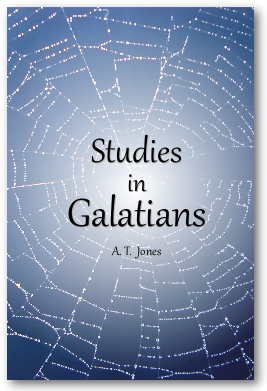 Because the church of Laodicea (Revelation 3:14-22) trusts in a false gospel, the message to heal her offers the riches of the true gospel. The book of Galatians, therefore, becomes a very important book for Laodicea to understand, as it stands out as the key book of the Bible which distinguishes between the true and false gospel.
Because the church of Laodicea (Revelation 3:14-22) trusts in a false gospel, the message to heal her offers the riches of the true gospel. The book of Galatians, therefore, becomes a very important book for Laodicea to understand, as it stands out as the key book of the Bible which distinguishes between the true and false gospel.
A. T. Jones and E. J. Waggoner, were chosen by God to bring the Laodicean message to the Seventh-day Adventist church, as Ellen White testified:
Letter S-24, 1892:
“The message given us by A. T. Jones and E. J. Waggoner is a message of God to the Laodicean Church.
Not surprisingly then, they both presented studies based on the book of Galatians. Waggoner was the first to begin opening up the truths of this book, when he was involved in a dispute in 1886 with George Butler, then-president of the General Conference over which law was discussed in Galatians. Waggoner later published his reply to Butler in The Gospel in Galatians: a Review. Then in 1900 Waggoner published The Glad Tidings, a verse-by-verse commentary on the book.
At the same time, Jones published a lengthy series of articles on Galatians in The Advent Review and Sabbath Herald (the main church paper) commencing weekly in 1899 and running for about one and a half years. This eventually coincided with a church-wide study of the book as it became the topic of the Sabbath School Lessons sometime in mid-1900.
Those articles by Jones are what comprise this book, along with a few sermons related to the study. 378p
Contents
- Introduction: Two Gospels
- Introduction: The Works of the Law
- Introduction: Ceremonialism
- Paul’s Apostleship
- The Gospel
- The True Gospel
- Why Galatians was Written
- Eating with the Gentiles
- Ceremonialism
- By Faith Alone
- The Place of the Law
- Rebuilding Sin
- Crucified with Christ
- Righteousness by Christ’s Death
- Christ and Him Crucified
- Faith is the Only Way
- Father of the Faithful
- Why Was Circumcision Given?
- The Law Reveals Sin
- The Just Shall Live by Faith
- Redeemed from the Curse of the Law
- The Return to the Faith of Abraham
- The Abrahamic Covenant
- Replacing the Covenant
- Exclusiveness
- The Inheritance by Promise
- The Pharisees Which Believed
- Wherefore then the Law?
- The Added Law
- Which Law Was Added? – Part 1
- Which Law Was Added? – Part 2
- Till the Seed Should Come
- Not Against the Promises
- Kept Under the Law
- Shut Up Unto the Faith
- How the Law Keeps Us Under
- The Law Brings Us to Christ
- Brought to Justification by Faith
- Baptized into Christ
- Heirs of God
- From the Spirit to the Flesh
- Losing the Blessedness
- The Two Covenants
- Putting the Law Above Christ
- A Debtor to the Law
- Waiting for the Hope
- Faith Which Works by Love
- The Liberty of the Gospel
- The Two Ways
- The Works of the Flesh
- The Fruit of the Spirit
- The Spirit of Restoration
- The Law of Christ
- Man Without God is Nothing
- Self-Examination
- Closing Salutation and Blessing
Bible Studies on the Christian Life
 Here are a series of studies that appeared in The Present Truth magazine from 1896-1897. The first study carried the title “Bible Studies on the Christian Life”. The rest didn’t, but followed on in the same theme, in fairly chronological order (with a few gaps). So I’ve assembled them all into one booklet. 70p
Here are a series of studies that appeared in The Present Truth magazine from 1896-1897. The first study carried the title “Bible Studies on the Christian Life”. The rest didn’t, but followed on in the same theme, in fairly chronological order (with a few gaps). So I’ve assembled them all into one booklet. 70p
There are a few important truths of the 1888 message that are clearly stated in these studies, and that later became cornerstones in the revival of the 1888 message brought by Fred Wright, and others. These are:
- Sin is a ruling power that men are enslaved to.
- Proper confession includes not just the fruit, but the root.
- Grace is a ruling power that delivers from the power of sin.
- Grace keeps us from sinning (brings perfection).
- The word of God has creative power.
- Trials are needed so we can experience the power of God’s word.
- We are to comfort others with the comfort we have received.
- The battle between Christ and Satan is to be finished within man’s heart.
Contents
- The Power of Sin
- The Slavery of Sin
- The Power of Grace
- Shall it be Grace or Sin?
- Who Shall Reign?
- Who Shall Be Glorified?
- Receive Not the Grace of God in Vain
- Ministers of God
- Kept by the Word
- The Power of the Word
- The Word that Works
- Living by the Word
- Eating of the Word
- Living by the Word: Now
- The Comfort of God
- The Ministry of Comfort
- The Two Sides in the Great Controversy
Studies in the Book of Daniel
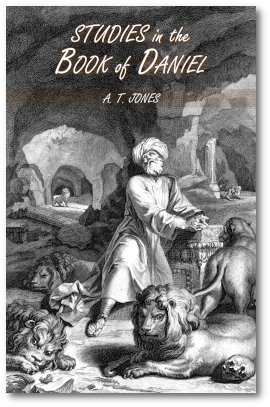 Many people know the prophecies of the book of Daniel and realize that these prophecies extend down to the “time of the end,” just before Christ’s return.
Many people know the prophecies of the book of Daniel and realize that these prophecies extend down to the “time of the end,” just before Christ’s return.
But what is equally important, as this book brings out, are the character lessons provided in the details of the lives and situations encountered in this small book. These events are also a lesson for the “latter days” as they foretell the forces that will meet, the conflicts that will take place, and the principles that will collide in the final struggle of sin and righteousness.
These studies originally appeared in The Advent Review and Sabbath Herald, January to June 1898. 114p
Contents
- A Book of Saving Principles
- The Parallel to Our Day
- For the Last Days
- Educational Excellence
- The Schools of the Prophets
- What Was Taught?
- Wisdom
- Knowledge
- Temperance
- God’s Purpose in the Captivity
- The Rise of Babylon
- Nebuchadnezzar’s Dream
- The Golden Image
- The Fiery Furnace
- Nebuchadnezzar’s Conversion
- Belshazzar’s Feast
- Two Ways
- Feasting and Drinking
- The Lions Den
- Without Man’s Devising
- Cyrus the Persian
- The Most High Rules
- The History of the World
- The Fall of Babylon
Evangelistic Temperance
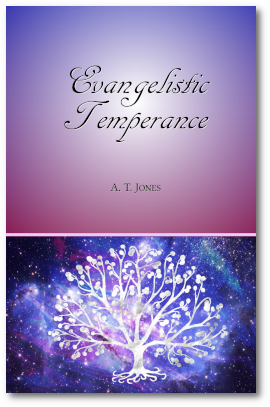 This short series of articles written by A.T Jones in 1898, covers a few of the basics of health reform: breathing, eating, and cooking. Faith is more than just a matter of the imagination; it finds expression in a desire, and positive energy, to glorify God in all the actions and decisions of life.
This short series of articles written by A.T Jones in 1898, covers a few of the basics of health reform: breathing, eating, and cooking. Faith is more than just a matter of the imagination; it finds expression in a desire, and positive energy, to glorify God in all the actions and decisions of life.
In spite of the progress of mankind in outward inventions, we live in a time of great disregard of the natural laws of health. Faith in God leads to a respect for His laws: both spiritual and natural. 94p
Temperance is self-control. Evangelistic temperance—Christian temperance—is self-control in all things,—of body, soul, and spirit. For he which “strives for the mastery is temperate [controls himself] in all things.” 1 Corinthians 9:25.
This is the only true temperance. And this is in order that we may glorify God in both body and spirit,—glorify Him, and Him alone, in all things, and so meet the object of our creation and of our redemption.
The Lord has created and redeemed the body as really as He has the soul. He cares for the body as really and as fully as He does for the soul. And He wants us to care for the body as really and as fully as we care for the soul.
Contents
- The Lord’s Wish
- Living by Breathing
- How Not to Breath
- Does Not Nature Itself Teach You?
- How to Breathe
- Healthful Effects of Right Breathing
- How to Speak
- The Breath of Life
- Exercises in Breathing
- Choosing Life
- Benefits of Right Breathing
- What is Not Food
- What Is Not the Best Food
- Flesh Meat
- Changing the Diet by Faith
- Something Better
- Importance of Good Cooking
Keeping the Commandments
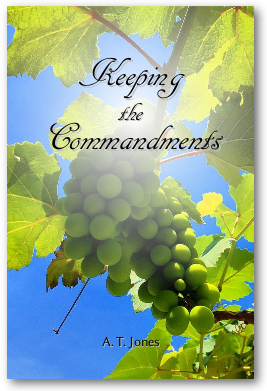 Keeping the commandments means to love God with the whole heart, soul, mind and strength. God is all and over all He is sufficient to govern and keep us obedient and faithful.
Keeping the commandments means to love God with the whole heart, soul, mind and strength. God is all and over all He is sufficient to govern and keep us obedient and faithful.
But when men do not want to give God His place within their soul, they are no longer able to govern themselves, and therefore must be governed by others. This is how human government started. Christians will not rely on governmental power because they know that only God can truly make a man obedient.
In this book, comprised of studies given at the 1897 General Conference, A. T. Jones covers the history of the struggle to maintain true godly government (“keeping the commandments”), and the various apostasies that resulted in reliance on men, human governments, and false idols.
He also covers the need for all to come out of spiritual Egypt and Babylon, with their dependence upon human power and force of arms. Only when we are delivered from spiritual Egypt, or the bondage of sin, can we truly keep the commandments. This is why the commandments start with the statement, “I am the Lord your God, which brought you out of the land of Egypt, out of the house of bondage.” (Exodus 20:2) 158p
Contents
- The First Great Commandment
- Serving God Where We Are
- Honest, Whole-Hearted Work
- Since the Beginning
- Is It Possible?
- The Source of Idolatry
- Human Rulers
- Nimrod
- Missionaries for God
- Abraham
- Leaving Your Country
- Hardship and Self-Denial
- Waiting for God’s Call
- The Example of Paul
- Egypt and Israel
- The Egyptian State
- Abraham Looked for a Country
- Missionaries in Egypt
- The Time of the Promise
- The Song of Moses
- Moses Chooses Church Over State
- Spiritual Egypt
- Deliverance from Spiritual Egypt
- A Parallel for Today
- Modifying the Ten Commandments
- The Bondage of Sin
- Jesus Called Out of Egypt
- The Apostasy of Israel
- A Mutilated Law
- The Real Land of Promise
- Not Reckoned Among the Nations
- Human Legislation a Result of Rejecting God
- Separation of Church and State in the Heart
- Rejecting the Government of God
- The Results of the Apostasy of Israel
- Solomon’s Time
- The Northern Kingdom
- The Southern Kingdom
- Out of Babylon and Egypt
- Hezekiah Learns Dependence on God
- Choosing Caesar over God
- A Lesson for the Final Days
- Your Kingdom Come
- No Place for Political Actions
- Keeping the Commandments
Christian Perfection
 Perfection, among Christians today, is often considered a “red rag to the bull” topic, one that elicits a lot of negative and hostile response. And this is strange considering that the Founder of Christianity, Christ Himself, is considered to be a perfect man by Christians, and Christ said, “Follow me”.
Perfection, among Christians today, is often considered a “red rag to the bull” topic, one that elicits a lot of negative and hostile response. And this is strange considering that the Founder of Christianity, Christ Himself, is considered to be a perfect man by Christians, and Christ said, “Follow me”.
This sermon, delivered at a meeting of the General Conference of Seventh-day Adventists in 1899, takes up this topic and shows what Christian perfection is, and how it is to be attained. It shows that perfection of the body of Christ is a work that prepares the way for Christ’s coming, and is therefore, an Advent doctrine, and essential for those who wish to see their Saviour in the clouds of heaven. 31p
Contents
- His Perfect Standard
- The Way of the Cross
- When Is It To Be Done?
- The Death of the Old Man
- Freedom from Sin
- The Service of Righteousness
- Unto the Fullness of Christ
- Perfect at Each Stage
- Finishing the Mystery
Who Shall Be Able To Stand?
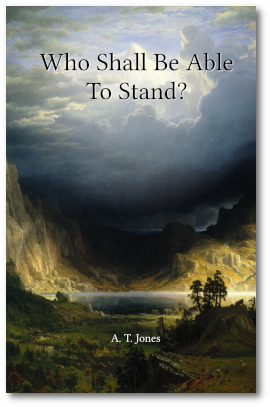 The fearful scenes that appeared to the prophets when they beheld the last days of Earth’s history, leading up to the Second Advent of Christ, have caused them to exclaim, “Who shall be able to stand?”
The fearful scenes that appeared to the prophets when they beheld the last days of Earth’s history, leading up to the Second Advent of Christ, have caused them to exclaim, “Who shall be able to stand?”
In this series of articles, published by A. T. Jones in 1887 to 1888, he unfolds the various elements involved in setting the stage for the final scenes, what God’s answer is to the people on Earth, and how a rejection of God’s answer leads to the image, worship, and mark of the “beast” power, described in Revelation chapter 13 and onward.
Some of the material in this volume describes forces that were in play in Jones’ time in America, when there was a vast united religious movement, called National Reform, which attempted to enforce religious laws using the state power. This threat has subsided for now, and will come again in the future, in a slightly different form. Those parts are more historical, although there is a lesson in them for us as well. 82p
Updated Nov 2022: New formatting rules applied.
Contents
- Who Shall Be Able to Stand?
- The Working of Satan
- The Time of the Working of Satan
- The Image to the Beast
- A Worldwide Warning
- The Place of the Sabbath
- The Rise of the Sabbath Controversy
- Abolishing the Law of God
- The Image of the Beast
- The Counterfeit of Christ’s Coming
- The Image of the Papacy
Protestantism: True and False
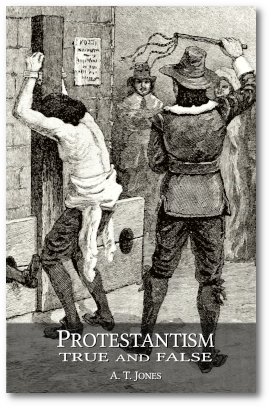 Religious zeal, without a clear knowledge of God’s character, has proved to be a snare in much of the history of Protestantism. Those who struggled for freedom of conscience, when the power was in their hands, were unwilling to give the same freedom to others. Yet they thought they were serving God and establishing His kingdom.
Religious zeal, without a clear knowledge of God’s character, has proved to be a snare in much of the history of Protestantism. Those who struggled for freedom of conscience, when the power was in their hands, were unwilling to give the same freedom to others. Yet they thought they were serving God and establishing His kingdom.
The history that makes up this short book, was originally Chapter 23 in the much larger volume, “The Two Republics”. I’ve prepared it separately because it provides a concise history of the struggle for freedom of conscience, first in Europe, and then later during the founding days of America. The text has been reformatted for clarity, and I’ve added more pictures.
Although not always pleasant, there is a need to dwell on this history, lest we forget that the religious liberty so hard fought for, may be easily and carelessly thrown away in the future, by those who forget the lessons of the past. 124p
John 16
2 They shall put you out of the synagogues: yea, the time will come, that whosoever kills you will think that he does God service.
Contents
- The Reformation Begins
- The Principles of Protestantism
- Progress of the Reformation in Europe
- Puritanism and the New England Theocracy
- The Sufferings of the Baptists
- The Sufferings of the Quakers
- More Religious Laws in New England
- Summary
Bringing the Advent Message into the World
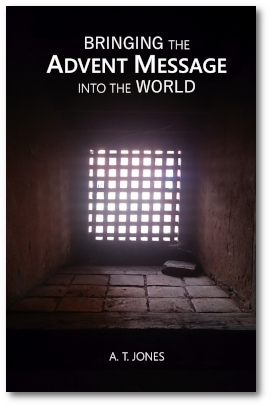 How shall the Advent message be presented to the world? After the separation of the Adventist church from the Protestant churches in 1844, Adventists tended to be identified by certain distinguishing doctrines. In the beginning, those doctrines, including the Law of God, were parts of the living revelation of the Christ whom they followed. But with the passing of time, as the primitive faith waned, the doctrines became just dry and legal presentations of Bible facts. They became mental ideas, not spiritual life.
How shall the Advent message be presented to the world? After the separation of the Adventist church from the Protestant churches in 1844, Adventists tended to be identified by certain distinguishing doctrines. In the beginning, those doctrines, including the Law of God, were parts of the living revelation of the Christ whom they followed. But with the passing of time, as the primitive faith waned, the doctrines became just dry and legal presentations of Bible facts. They became mental ideas, not spiritual life.
When the living gospel message came to the Adventist church in 1888, there was a tendency to only dwell on faith, justification, forgiveness, cleansing–topics that were considered more “gospel.” And yet, the gospel and the law (or the doctrines) are perfectly united in God’s plan, both being an expression of His character.
So in these presentations that A. T. Jones made before the General Conference, he discusses how these two parts of the truth are to be joined together in order for the message to be effective. Especially must these two parts (law and gospel) be joined within the heart of the believers, to make them a living witness of what they speak. 33p
Contents
- An Increase of Knowledge
- The Great Subjects to be Preached
- Using the Law Lawfully
- The Law as the Foundation
- The Doctrines in Christ
- Living Doctrine
Gospel Lessons in the Old Testament
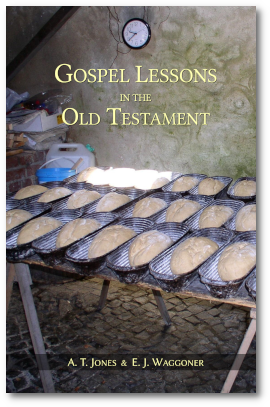 For the first time ever, the articles of A. T. Jones and E. J. Waggoner on the Old Testament are gathered and offered in one book.
For the first time ever, the articles of A. T. Jones and E. J. Waggoner on the Old Testament are gathered and offered in one book.
Most of these articles were written for the various series of Sabbath-School and Sunday-School Lessons that came weekly to the churches of that time. Other relevant articles were also included. They cover a span of about 20 years, from 1883 to 1903.
Within these articles, the Everlasting Gospel principles are brought out. They show that God’s plan, His “everlasting covenant” has ever been the same: there is only one Gospel whereby men are saved, one eternal Law whereby all are judged and convicted, and one Mediator (Jesus Christ) through whom all these blessings come. 1674p
Note: There are too many articles to list here, so I have just listed the main categories that the book is divided into.
Contents (Sections)
- Prologue
- Genesis
- Exodus
- Leviticus, Numbers, Deuteronomy
- Joshua, Judges, Ruth
- Samuel to Solomon
- Israel and Judah
- Ezra, Nehemiah, & Esther
- Isaiah, Jeremiah & Ezekiel
- Daniel
- The Minor Prophets
Is Sunday the True Sabbath?
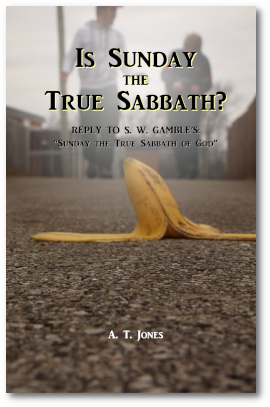 This booklet was mainly written as a reply to yet another man-made theory to try and prove that Sunday is the true Sabbath.
This booklet was mainly written as a reply to yet another man-made theory to try and prove that Sunday is the true Sabbath.
It is remarkable to what extent men will go to avoid the claims of the seventh-day Sabbath, and to put in its place fig-leaves to cover their nakedness.
The last chapter, “The Rest That Remains,” is a compelling defense of the Sabbath as a day commemorating and reinforcing the rest from sin that is brought about through God’s work in the Gospel. This section alone justifies the republishing of this work. 67p
Contents (Sections)
- Prologue
- The Question at Hand
- The Testimony of the Bible
- Fallible “Proofs”
- The Three Decalogues
- How to Make Sunday the Seventh Day
- The Rest That Remains
Through the Bible
 Appearing in the 1908 Medical Missionary periodical, these articles cover the first 8 chapters of Genesis.
Appearing in the 1908 Medical Missionary periodical, these articles cover the first 8 chapters of Genesis.
It seems they were intended to cover the whole Bible, but the series was never finished.
There are, however, some very nice gospel insights, and these studies contain the only explanation of the everlasting covenant spoken to Noah, in all the writings of A. T. Jones and E. J. Waggoner. 150p
Contents (Sections)
- Preparing for a Study of the Bible
- Main Periods in the Bible
- A Brief History of Worldly Kingdoms
- A Brief History of Man
- Creative Steps
- The Creative Word
- Creation or Evolution: Which?
- Man and Woman
- Man’s Diet and God’s Rest
- God’s Purpose in His Rest Day
- The Fall – I
- The Fall – II
- The Redemption – I
- The Redemption – II
- The Redemption – III
- What Was Cain’s Fault
- The Unrepentant Cain
- What Caused the Flood
- The Flood
- The Rainbow and Its Meaning – I
- The Rainbow and Its Meaning – II
Fragments, Vol. 1: Grace Greater Than Sin
 This is the first volume of the “Fragments” series, a collection of periodical articles which never made it into book format, organized by topic. This volume covers the Gospel message, the power of God to deliver from sin.
This is the first volume of the “Fragments” series, a collection of periodical articles which never made it into book format, organized by topic. This volume covers the Gospel message, the power of God to deliver from sin.
In this volume there are lessons on faith, freedom from sin, Christ’s identification with humanity, how to receive His eternal life, how righteousness by faith works, and the purpose of the law. 496p
“It is not what is outside of us, but what is inside, that makes us Christians and keeps us so. You must be better before you can do better.
“Christianity does not come from ourselves, nor from anybody nor anything that is around us. It comes down straight from heaven to every soul who will receive it. And having its source in heaven, it is not, and cannot be, affected by anything that is of earth.
“Thus the Christian has joy in sorrow, peace in perplexity, riches in poverty, society in loneliness, and friendship among strangers and even enemies.” Advent Review, November 2, 1897
There are 101 articles in this collection, a bit too many to post here, so I have skipped the usual “Contents” listing.
Fragments, Vol. 2: Healing and Temperance
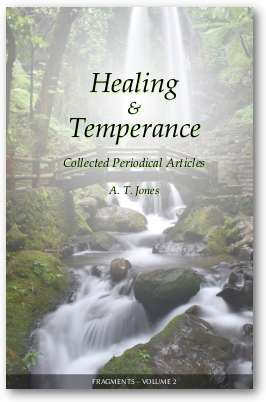 Medical Missionary Work, or the application of the Gospel principles to the healing of the body, is a vital part of the Gospel.
Medical Missionary Work, or the application of the Gospel principles to the healing of the body, is a vital part of the Gospel.
The Gospel deals with moral disease, and since it was sin that brought sickness into the world, the work of dealing with sin must also deal with the consequences of sin. So Christ spent a large part of His ministry in healing the diseases of the body, as an illustration of the power of His word to heal the soul.
It is the work of the Gospel to bring man back to obedience to God’s laws, both moral and physical. Since the final generation is distinctly marked out as those who “keep the commandments of God and the faith of Jesus” (Revelation 14:12), the health work takes its place alongside the Gospel.
It is not surprising then, that when the Gospel message was revived in 1888, the principles of God’s way of healing were also brought to the forefront. Many people may not be aware of the large number of articles written by A. T. Jones and E. J. Waggoner on this topic, but here are the articles of Jones, gathered (I think) for the first time into one collection and organized according to topic.
The consistency and similarity with the later presentations of the same theme, as contained in the book “Your Doctor,” by F. T. Wright, bears witness to the fact that the 1888 message is still alive and well, and among us this very day. 259p
Contents
- True Temperance is Self-control
- The Principle of True Temperance
- The Bible and Health
- How to Will, and to Do
- Why Do You Such Things?
- Use Food and Not Stimulants
- Do Not Drink Tea
- Do Not Drink Poison
- Eat That Which is Good
- A Kingdom Built on Temperance – I
- A Kingdom Built on Temperance – II
TEMPERANCE PRINCIPLES
- Health Reform by Faith – I
- Health Reform by Faith – II
- Faith Cure
- Saving Health
- Divine Prescriptions for Health
- Religion and Health
HEALTH BY FAITH
- Cure “La Grippe” Yourself
- Catarrh
- Health Reform Resources
- The Prisoner’s Friend
- The Better Self
- Can the Drunkard Have Hope?
PRACTICAL TREATMENTS
- Bones, Stones, and Miracles
- Faith and the Cure of Disease
- Abominable Things
- More “Oppositions of Science Falsely So-called”
- Why Not Use Sense, Instead?
SOME COMMON ERRORS
- A True Reformer
- Gospel and Medical Work Combined
- The Human Temple
- A Christian Nurse
- Battle Creek Sanitarium Day at the St Louis Exposition
- Christ: the Great Model Missionary
- The “Why” of the Religious Phase of the Sanitarium
THE HEALTH REFORM WORK
- What is True Patriotism?
- What is Christian Patriotism?
- Christian Naturalization
- Renouncing Foreign Allegiance
- Love of Country
- Loyalty and Allegiance
- Harmony with the Law
- Leading Away from the Commandments
- The Commandments and the Healing of Disease
- The Test of All Miracles
- The Commandments and False Miracles
- The Lord’s Principles vs Satanic Remedies
- Cause and Cooperation
- Amendment of Life
PATRIOTISM AND HEALTH
Fragments, Vol. 3: Life, Death, and Spiritualism
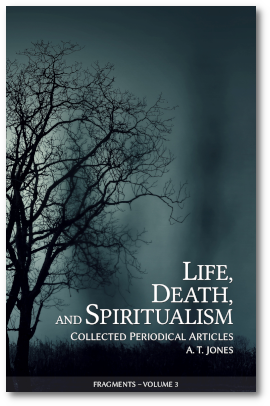 The articles in this collection are on the topic of the soul, eternal life, immortality, the nature of man, and what happens at death.
The articles in this collection are on the topic of the soul, eternal life, immortality, the nature of man, and what happens at death.
The idea that man has an “immortal soul” was a Greek philosophical concept which became incorporated into the Church during the “falling away” period, when paganism became blended with pure Christian ideas.
In these articles, Jones presents some of the Biblical evidence against this heathen notion, and also quotes from modern-day sources which showed how the idea that dead spirits could speak with people was advancing, not just among the world, but even from within the churches, in spite of the many warnings of the Bible against such practices.
Immortality belongs to God alone, and is given to man only through the redemption that is in Christ. Christ is our life. 203p
Contents
- The Death of Saul
- Did Elijah Die?
- Psalm 146:4
- Try the Spirits
- The Death of Lazarus
- A Pagan Paradise
- Which of These is Not Spiritualism?
- What is This But Spiritualism?
- Whither I Go You Cannot Come
- Partakers of the Divine Nature
- The Scripture Cannot Be Broken
- The Immortality of the Soul
- What Happens When We Die?
- Orthodoxly Insane
- Is Man Immortal?
- What is Modern Spiritualism?
- The Sleep of Death
- Jesus and the Resurrection
- They Are Dead
- Science on the Immortality of the Soul
- Satan’s New Move
- Oppositions of Science Falsely So-called
- The Cruelty of Infidelity
- Origin of the Doctrine of Natural Immortality
Fragments, Vol. 4: Money and Work
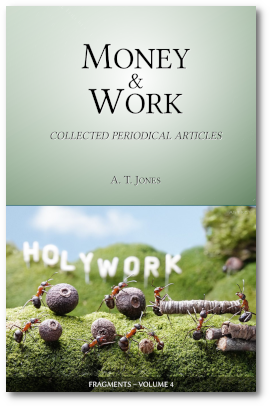 Practical work and the right management of the production of our labor, are key parts of the gospel, which gives men victory over their selfishness, and gives them the ability to do good works from a pure heart.
Practical work and the right management of the production of our labor, are key parts of the gospel, which gives men victory over their selfishness, and gives them the ability to do good works from a pure heart.
This volume gathers together those articles which cover wages, offerings, and the spirit of service as exercised in practical work. That these topics have a critical bearing on the final gospel work is shown by the prominence practical labor had in the life of Jesus, both in the years He spent in the carpenter shop, and in the ministry He carried forward during His 3½ years as the Anointed One.
We are to labor as Jesus labored:
John 14
12 He that believes on me, the works that I do shall he do also; and greater works than these shall he do; because I go unto my Father.
Isaiah 58 also speaks of a time when the church will be turned from her vain and useless “works,” to minister the word and power of God, as a practical, living force. The gospel work is to close with the same demonstration of the spirit and work of God that began it, so long ago. 149p
Contents
- Trust in Our Heavenly Father
- God Loves a Cheerful Giver
- That There Be No Gatherings
- Trusts
- Those First-Day Offerings
- Dangers of Riches and Blessings of Poverty
- Consecration
- Provide Things Honest in the Sight of All Men
- Prosperity
- Work to a Purpose
- The Perilous Times
- Is Your Money Safe?
- Lending to Others
- Are You Honest?
- Sell and Give
- What Do These Things Mean?
- Loving is Giving
- Self-Government Means Self-Support
- Mammon-Worship in Giving
- Denominational Finances
- The First Commandment
- Appendix: Denominational Debts
Fragments, Vol. 6: The Bible
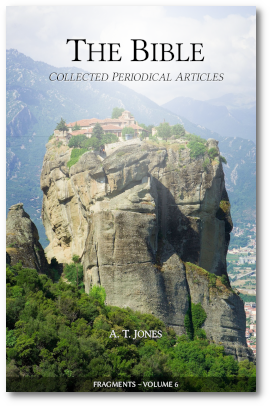 This sixth volume of the “Fragments” series contains articles that deal with the Bible: its inspiration, accuracy, literary qualities, reliability, and some of the vain attempts made to overthrow it.
This sixth volume of the “Fragments” series contains articles that deal with the Bible: its inspiration, accuracy, literary qualities, reliability, and some of the vain attempts made to overthrow it.
From the beginning, Satan’s assault was on the word of God. “Has God said that?” he questioned Eve, implying doubt. Then he offered his own interpretation of the word: “You shall not surely die. This fruit will make you like God.”
Because man failed in trusting the word of God, man must be led back to trusting the word of God again.
But to prevent this faith from being ours, the Bible is attacked from all sides, by atheism, false interpretation, and science falsely so-called. But rest assured, the Bible is an anvil that has worn out many hammers. The simple faith of Abraham, who believed that what God had promised, He was able to do, is what will still prevail today. 114p
Contents
- The Division and Punctuation of the Scriptures
- Vain Philosophy
- The Teaching of the Apostles
- When Was the New Testament Written?
- Can the Old Testament Be Trusted?
- How Do You Read?
- The Authority of the Old Testament
- Dr. Clarke and the First Written Document
- Infidelity in High Places
- How God Has Spoken
- Mr. Moody’s Bible School
- Questions and Answers
- The Sure Interpreter
- Eternal Depth of God’s Word
- How to Know that the Bible is the Word of God
- Does God Mean What He Says?
- Are You Agreed?
- Believing the Word of God
- Heaven in the Home
- Why Is This Thus?
Fragments, Vol. 7: The Church
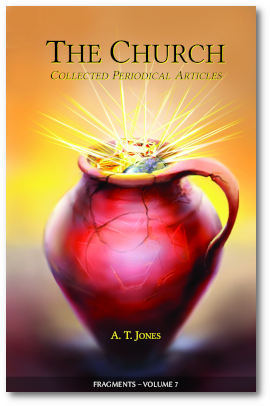 The Church is defined as “His [Christ’s] body, the fullness of Him who fills all in all.” (Ephesians 1:23). It is through His Body, that Christ will give the final revelation of His Father’s character, just as He gave it when He was on Earth, 2000 years ago.
The Church is defined as “His [Christ’s] body, the fullness of Him who fills all in all.” (Ephesians 1:23). It is through His Body, that Christ will give the final revelation of His Father’s character, just as He gave it when He was on Earth, 2000 years ago.
It is not surprising then, that the Holy Spirit should illuminate this topic, to prepare the Church for her high destiny in the closing scenes of the great controversy between Christ and Satan.
This volume provides a wonderful introduction to the Bible teaching about the Church: its composition and membership, its officers, its service, its missionary work, and its organization.
Although the topic is inexhaustible, because He who inhabits the Church is infinite, these articles, written from 1885 to 1907, provide an excellent starting point. 234p
Contents
- Counsel to Elders
- Service of Self
- Jesus Teaching Humility
- Christ’s Prayer for the Church
- The House of God
- The Body of Christ
- Members One of Another
- The Relation of Church-members One to Another
- Church Officers
- The Qualifications of Church Officers
- The Duties of Church Officers
- Apostasy of the Church
- The Church as a Light
- Christian Discipline
- Bear One Another’s Burdens
- Local Elders
- Sharp Letters
- Follow Me
- Ministers as an Example
- Corporate Repentance
- Church Organization
- Reorganization
- What does it Mean to be a Church Member?
- Christian Loyalty – I
- Christian Loyalty – II
- The Christian Way with the Faulty and Erring
- Turning People Out of the Church
- The Right of Individuality and of Conscience
- Authority of the Church
- Prophets and Prophesying in the New Testament
Fragments, Vol. 8: The Holy Spirit
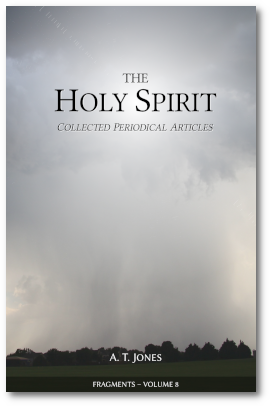 The Holy Spirit, or Comforter, is the representative of Jesus upon Earth. His work is to administer the riches of Christ to His church (“He shall take of mine and shall show it unto you.” John 16:15).
The Holy Spirit, or Comforter, is the representative of Jesus upon Earth. His work is to administer the riches of Christ to His church (“He shall take of mine and shall show it unto you.” John 16:15).
After the resurrection, when Jesus officially began His work as High Priest in the heavenly Sanctuary, there was a special dispensation of God’s grace, in the outpouring of the Spirit upon the church. This was the “early rain.”
As Christ’s ministry in the sanctuary draws to a close, there is to be another such outpouring, known as the “latter rain,” to complete the work of ingathering, and to to finish the purifying work of Christ’s ministry upon the church, so that His image is perfectly reflected through it.
Naturally then, the topic of the Holy Spirit is an important one, since the church must intelligently cooperate with the Spirit in this final work.
This volume divides into two sections:
1. The first part consists of eight earlier articles (1886-1897) which cover the work of the Spirit and the role of the gifts. Five of these articles consist of a series of striking prophetic parallels between the final events of Christ’s ministry before the cross, and their corresponding events in the final battle against evil, that the church is now entering upon. The prophetic parallels that Jones outlines here, were to find a fuller explanation in the truths contained in The Seven Angels theme, which came about 100 years later.
2. The second part (1897-1899) consists of 84 articles written over a two-year period, encouraging the church to reach out and grasp the outpouring of the Holy Spirit. The particular circumstances of that time made it possible for the work to be completed in latter rain power. Jones recognized these circumstances, and urged the church to enter into that experience.
Sadly, many did not grasp the opportunity, and these promises remain for us to receive. These articles are very relevant to the time we are in today, and are highly recommended. 477p
Contents
- The Mission of the Spirit
- Anoint Your Eyes with Eye-salve
- The Hour of Watching
- In the Time of Trouble
- Get Ready for the Coming of the Lord
- The Close Combat
- The Gifts: Their Presence and Object
- The Testimony of God’s Spirit
- 1897-1899 Collection: Receive the Holy Ghost
Fragments, Vol. 10: The Name of God
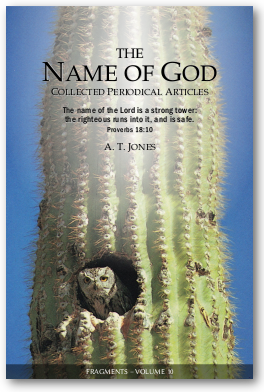 It is the character of God which illuminates the darkness of this world. The world is dark through the misapprehension of God’s character. This started with the lie that Satan told to our first parents in the garden, and has grown with time.
It is the character of God which illuminates the darkness of this world. The world is dark through the misapprehension of God’s character. This started with the lie that Satan told to our first parents in the garden, and has grown with time.
In the Bible, names represent character attributes. Likewise, the name of God reveals His character. The articles in this volume unfold the theme of God’s character, especially as revealed through Christ, who is “the brightness of His glory, and the express image of His person.” (Hebrews 1:3).
The writings of Waggoner and Jones were only the beginning of the light of the glory of God which is to lighten the world, and therefore, we also recommend the book, Behold Your God, by F. T. Wright, which expounds more fully on this great theme. 113p
Contents
- Knowledge and Gratitude
- Be Strong and of a Good Courage
- Comfort, Comfort My People
- The Excellency of Christ – I
- The Excellency of Christ – II
- The Spirit of Christ in the Work of Salvation
- What is His Name?
- My People Shall Know My Name
- Preaching and Baptizing in His Name
- Asking in His Name
- The Two Principles
- That Broken Heart
- He Ever Lives to Make Intercession
- Confidence
- Not Far Means Near
- God’s Eternal Purpose
- The Revelation of God
